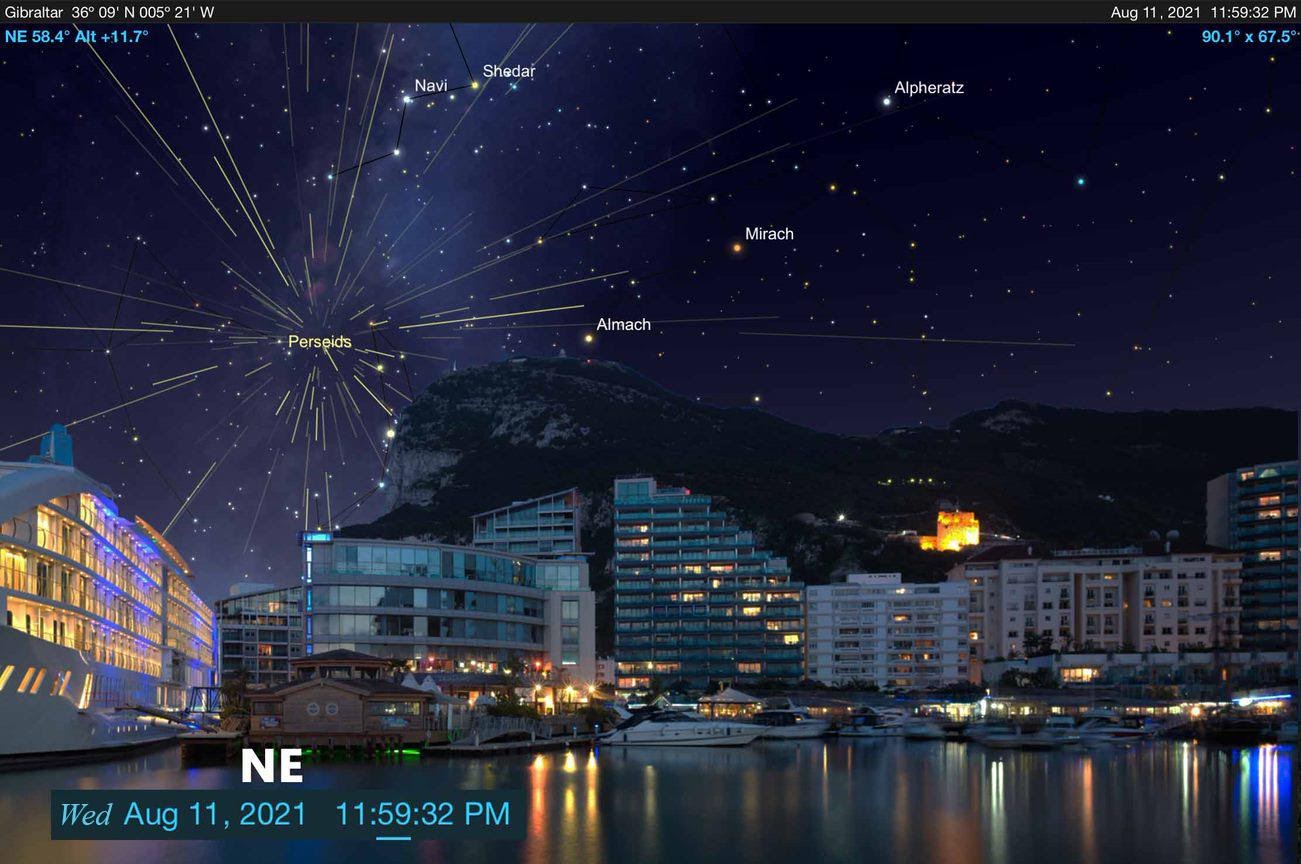Written by YGTV Team on 10 August 2021.
The Gibraltar Astronomical Society says this year’s Perseid Meteor Shower should see a “splendid show with no Moon to interfere in their majestic display”.
A statement from the Gibraltar Astronomical Society follows below:
The Perseid meteor shower is one of the most anticipated celestial events in the Northern Hemisphere. Though the “shooting stars” are already lighting up the skies in small numbers, the pace will accelerate around 11th-12th August, making them easy to view without a telescope from a dark site. It is also expected, that even after the peak date, in the early hours of 12th August, there will be another rich display on Friday 13th August. Add also into the equation the fact that the Moon will be just three and a half days past new, and setting around 11.21 p.m., then the stage is set for a splendid show of the annual Perseids. At peak, hourly rate of the Perseids can reach 100 per hour although most observers under good skies will see closer to 50 per hour and half that from areas that are light polluted. To maximize your shower enjoyment, find as dark a site as possible.
What Are The Perseids?
Meteors are particles of rock floating about in space released in the tails of comets, which are dirty rocky snowballs in orbit around the Sun. The Perseids are a result of the Earth flying through the same area of space that Comet Swift Tuttle (26 km wide) flew through in 1992 (the next time will be in 2126)
Continued at the link.
